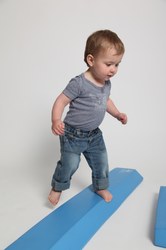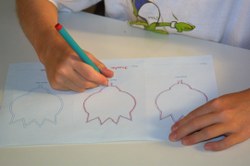Gross and fine motor function
To test Gross and fine motor functions we have the following equipment at our disposal in the department.
- Movement ABC: Test to detect motor problems in children from 3 to 16 years.
- KörperkoordinationsTest für Kinder (KTK): assessment instrument for gross motor function.
- Wravma: The WRAVMA is a well-standardized tool that provides a reliable, accurate evaluation of visual-motor skills of children and adolescents ages 3-17 years.
- Perdue Pegboard: The Purdue Pegboard Test is used to evaluate fine and gross motor dexterity and coordination.
- Peabody (PDMS2): Assess fine and gross motor skills of children.
- Ybalance test to measure gross motor skills.
- Ghent developmental balance test: The Ghent Developmental Balance Test aims at offering a complete developmental series of tasks, reflecting specifically the development of the child’s balance abilities. This test is fit for typically developing children between 18 months and 5 years 11 months or for children with a similar level of balance control.
- Bruininks-Oseretsky Test of Motor Proficiency (BOT): BOT-2 assesses the motor proficiency of all students, ranging from those who are normally developing to those with moderate motor-skill deficits. It can also be used for developing and evaluating motor training programs.
- GMFM: The GMFM is a measure designed to assess change in gross motor function for children aged 5 months to 16 years with cerebral palsy (CP).
- GMFCS: Gross Motor Function Classification System or GMFCS is a 5 level clinical classification system that describes the gross motor function of people with cerebral palsy on the basis of self-initiated movement abilities. Particular emphasis in creating and maintaining the GMFCS scale rests on evaluating sitting, walking, and wheeled mobility. Distinctions between levels are based on functional abilities; the need for walkers, crutches, wheelchairs, or canes / walking sticks; and to a much lesser extent, the actual quality of movement.

